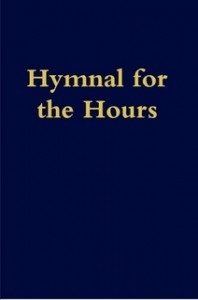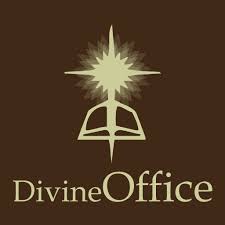Review: Hymnal For The Hours
 Subscribe to Nick Alexander’s blog today.
Subscribe to Nick Alexander’s blog today.
When I was in college, before I had converted to Catholicism, I would occasionally make it to early morning prayer with the Brotherhood of Hope, who lived down the street from me. And it was on these mornings that I had learned about Praying the Divine Office.
For those who are unfamiliar, the Divine Office is a series of daily prayers prescribed by the Church for those in religious life, but laypersons could participate as well. A full devotional that incorporates Psalms, Readings, and writings from the Saints, it is in sync with the Church calendar, and there are parts of the whole day to incorporate the devotion.
In my zeal, I had purchased my own copy of Christian Prayer, and had my own setup to incorporate this worship into my schedule. Sadly, my devotion has its ebbs and flows, times where I was gung-ho about this devotion, and times where I let this devotion languish. Even many years later, when I discovered the Divine Office app, I lost interest because there was something a little bit off in terms of the modern hymns they had chosen for their use.
Right now, I am in the gung-ho part of my devotion. The cause of this renewed interest in the Liturgy of the Hours has been none other than the “Hymnal For the Hours”, a collection of Gregorian chant-like hymns that have been preserved and modified through the ages. Compiled by Rev. Samuel F. Weber, OSB, it appears to be a product of love, as the vast majority of these hymns are introduced to me for the first time. For some reason, most of the major Catholic publishing arms have ignored the vast majority of these hymns, whose sources are as varied as fourth century writers such as St. Ambrose, and translators such as John M. Neale.
To be delivered this single resource, nearly 700 pages in length, you cannot help but wonder, what took the publishing houses so long? Alas, in this one case, it was an independent publishing house, sustained by Lulu.com, that made this a reality.
Delving in, the words are ornate, but not in a way that they are not understandable. Being passed down through the centuries, you get the sense of history singing along with you. You have the benefit of strong theology, written by the Saints and scholars of our faith, combined with exquisite poetry.
The next challenge, however, was that of musical notation. Gregorian notation is a little bit different from standard musical notation, and I needed a refresher. It would have been nice if there was such in its pages (instead, we get a very thorough forward from Cardinal Burke), but in lieux of that, you can still use google and discover sites that walk you through the notation.
Even so, without the context of a community singalong, nor without the context of any of these hymns, no wonder a lot of people are trepidatious on doing the work and figuring out these hymns. For a newbie, it is still hard to grasp the melody of these songs. But, for those who have apps and multiple mobile devices, the solution is there.
First and foremost, I would purchase the “iChant – Gregorian” app. This app is simply the musical notation put forth in Gregorian style. By setting up the proper clef position, and then touching on the notes, you can sense what the melody would be. Sometimes you would have to do it multiple times until the melody finally registers.Secondly, I would take a second mobile app, and record into the device the melody, once learned. Singing “La La La” for each musical phrase, and then hit pause. Do this for the duration of a single stanza of music.
Then, when it is time to pray the Divine Office, I play this melody over and again, while I chant the hymn, a cappella. It adds much more color than merely reciting the ancient-but-non-archaic words, and, in my mind, is a much greater improvement to the current hymns that make up what constitutes Catholic hymnody today. (No disrespect to them current hymns, as they are very efficacious in many instances).
I suspect that, within time, I will become even more familiar with the hymns that I would no longer need to resort to using these tools to get acclimated to the proper melodies of these rediscovered songs. As it stands, I feel that, for once, I finally have access in a single resource, to some of the greatest lost treasures of the Church, perfect for personal devotions. That it is written with only the voice in mind, it simplifies the entire endeavor, without need for musical accompaniment (not that musical accompaniments have not been written for some of these melodies, nor that they, if need be, could not be figured out). In this process, I have rediscovered the treasures of the Divine Office, and hope that, this time, the devotion will stick.
Purchase your own copy of Hymnal For the Hours.
Subscribe to Nick Alexander’s blog today.
Enter the Conversation...
4 Responses to “Review: Hymnal For The Hours”Trackbacks
Check out what others are saying about this post...-
[…] to Artists – Richard J. Clark The Mystery of Music – Thomas Van, Catholic Culture Hymnal Review: Hymnal For The Hours – Nick Alexander A New Proposed Layout for the Roman Missal – Ben Yanke, Nw Lt Mv […]











When I first started attending a Catholic church, I was struck by the awfulness of the music. One of the reasons I left the contemporary form of the Protestant worship services is because of the awfulness of the music. It had become like going to a show, rather than a worship service.
To my horror, the music was actually worse in the Catholic church! In fact, I would go so far to say that the music itself is very much like commercial jingles or television sitcom theme songs, and the lyrics are so horribly effeminate that I almost walked out at the first mass I attended.
Where else to go?
I became Catholic in 2013 in spite of the hideous music.
Since then, I have discovered the joys of Latin and Gregorian chant.
Even though I love and listen almost exclusively to classical music, I have come to love silence even more than music.
I also used to sing daily from an old Methodist hymnal, and it was helpful in keeping a spiritual content going in my head when everywhere else was just the noise of the culture at large.
You will definitely want to check out this hymnal then. It is as counter-cultural and ancient as it can be. With the use of the app and a simple recording device, you can master the Gregorian-chant-esque melodies in practically no time. And then be transported.
I’ve been using the Hymnal for the Hours for about 2 months, and it has helped me to faithfully say at least one hour a day. I look forward to it, now that I have music to follow along with that is so much more theologically rich than “Morning Has Broken.” I hope you are having better luck, too. And I highly recommend the Mundelein Psalter as well. You will be able to sing almost ALL of the words of the hours, EASILY! But you are right in saying that this Hymnal opens up the riches of the Church to a new generation. Fr. Samuel Weber is one to follow what he is doing with the “Institute of Sacred Music” that he founded.
Thank you for writing this awesome review!